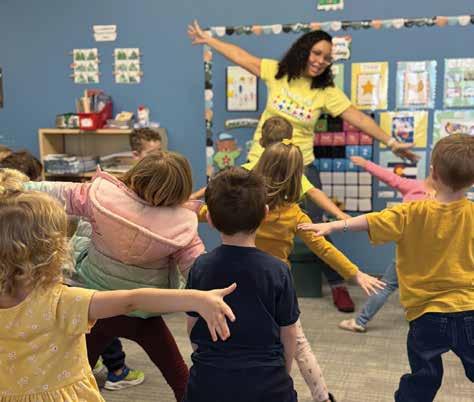
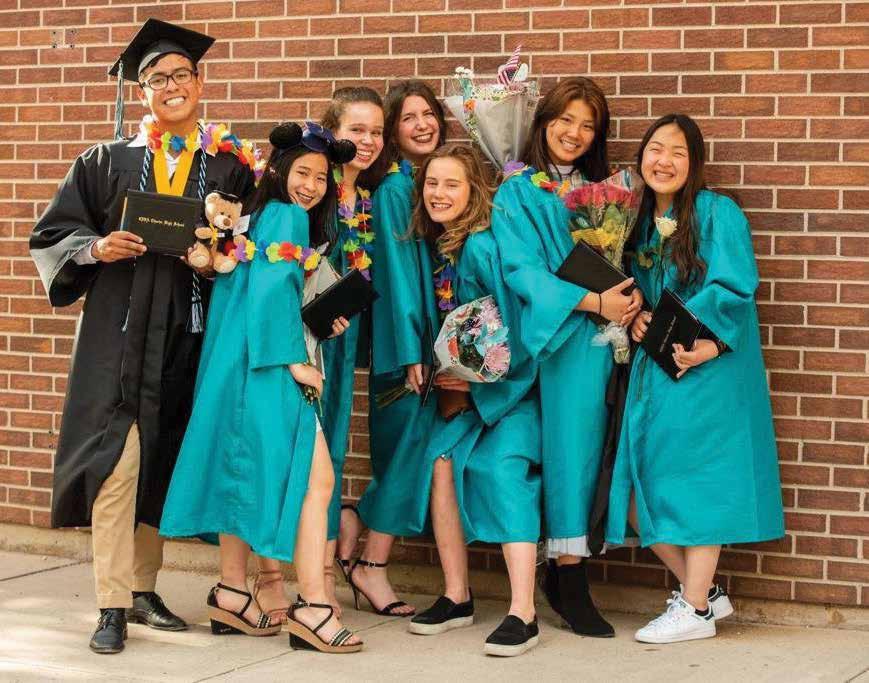



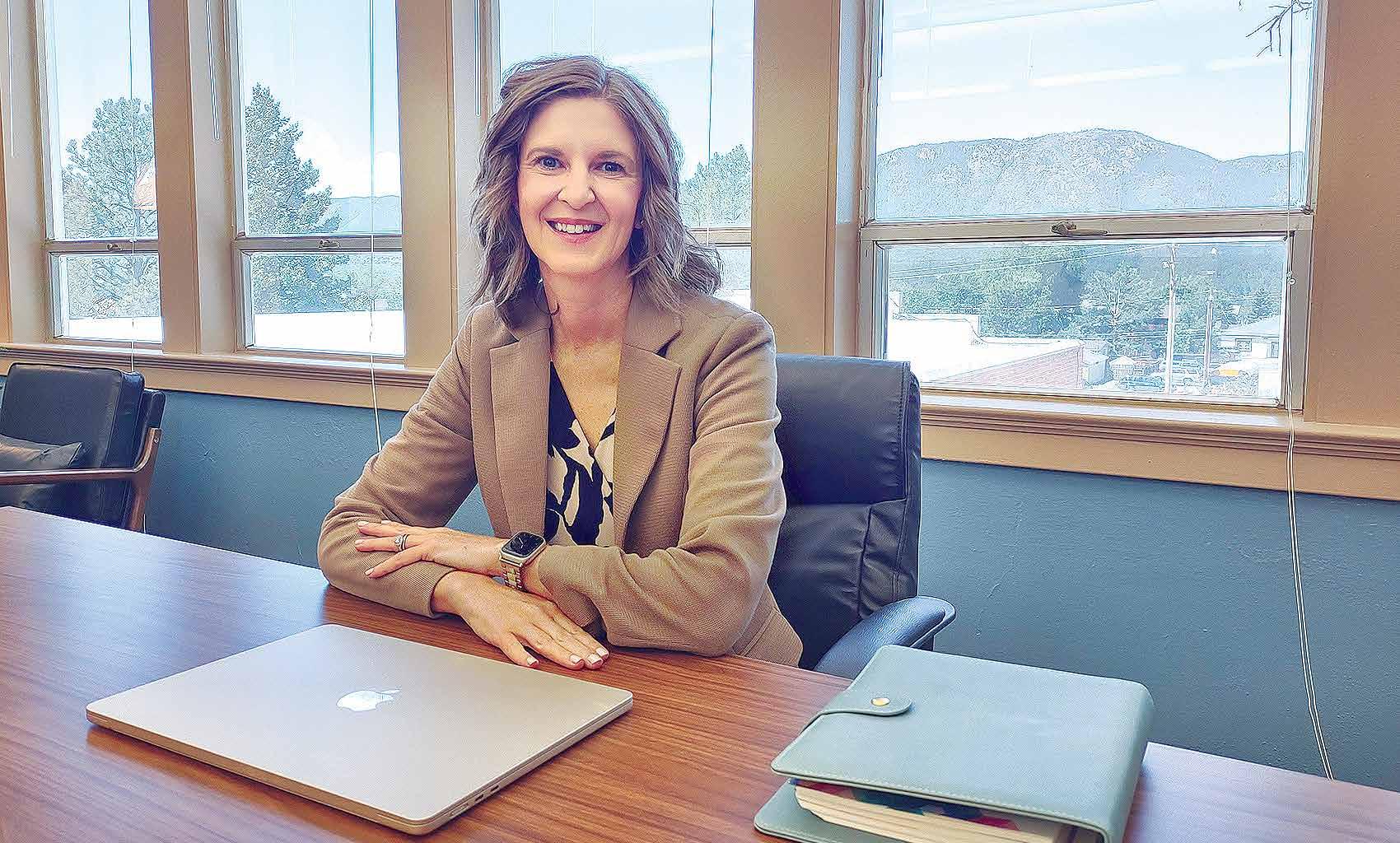







Amber Whetstine has worked in the district as Assistant Superintendent since 2021
By Eric Young eric.young@gazette.com
Lewis-Palmer D-38’s new superintendent Amber Whetstine is no stranger to the school district or its community.
Prior to her appointment in May to lead the district, she had been its assistant superintendent since 2021, when she worked alongside former superintendents K.C. Somers and Stacie Datteri.
Now, as she looks ahead to her first year in the new role, Whetstine looks to provide stability to D-38’s traditions while also pushing it forward.
“I am extremely honored and proud to be serving in this role, both as superintendent and as a parent in
the district,” she said.
“And I don’t take the responsibility lightly. I’m committed to continuing to develop relationships with all of our community stakeholders and I’m committed to upholding our reputation as an exceptional school district.”
Starting her career as an elementary teacher in St. Paul, Minn., Whetstine moved to the Pikes Peak region in 2002 and worked in the neighboring D-49 in a variety of roles that included a teacher, instructional coach, principal, the district’s school improvement coordinator and its director of learning services.
The Gazette caught up with Whetstine to discuss her vision for the school district.
This interview has been edited for clarity and brevity.
Did you always see yourself pursuing leadership positions in public education?
“No. When I started teaching, I knew I wanted to make a positive impact on others. And what better way is there than developing our students into well-established citizens and leaders? So, I really wanted to be a teacher. And then, I had a mentor who saw something in me and told me that I should think about becoming a principal. From there, I got interested in becoming an instructional coach to impact teachers and improve their impact with students. And I just saw the potential to make a greater impact as a principal and, eventually, a district leader.”
What brought you to the Pikes Peak region?
“I think just luck. My husband and I were looking for a more mountainous area, something different from the Midwest where we spent our entire lives up to that point and I was offered a teaching position at a job fair in Minneapolis and we said, ‘Let’s take an adventure and let’s go for it.’ That’s how we got here and we’ve loved
it ever since. We have a daughter who’s going to be a freshman at Lewis-Palmer High School next year and it’s just been a wonderful community here.”
What are some past accomplishments or some work that you’re most proud of to date?
“I’m always most proud of the relationships that I’ve developed over the years, whether it’s been with students or with staff or with parents and community members. What I want to be remembered by someday is that I established authentic and genuine, caring relationships with folks. And I think when you ask any of my colleagues or our staff across the district, I hope they would say that I cared deeply and genuinely about everyone’s voice and valuing all of our people.”
Why did you decide to pursue this superintendent vacancy?
“Because I love this community, I love this district. I am committed to this district, both as a superintendent and as a parent. I believe in the core values of our district which include integrity, respect, connection, growth and excellence and I believe that I can make a positive difference by continuing
a tradition of excellence, but also helping us pursue new and innovative pathways for students to pursue their passions.
“One exciting priority is the launch of our career and innovation center (CIC). It is set to open this school year and give students new options in career and technical education. So, we’ll have students involved with engineering, advanced manufacturing and skilled trades to start this next school year. So, all of the balance of tradition and innovation is what excites me about serving in this new role specifically in Lewis-Palmer.”
You most recently served as D-38’s assistant superintendent and interim superintendent over the past couple of years. What did you gain from these years in these roles?
“The opportunity to learn about the district. To build relationships with our students, our staff, with our parents and community members. It just has validated what I have known in that this is where I want to be for a long time. I understand the scope of the position. I think in acting as both the assistant and the interim roles, I am very aware of what our strengths as a district are and also our challenges.”
I imagine that you worked closely with former superintendent Stacie Datteri this past year ahead of her resignation. Looking back at this period, can you elaborate on why you think things didn’t ultimately work out with Datteri, given that she didn’t finish her first year?
“I don’t know, to be honest with you. But I do know that our staff and our students and our families are expecting consistency and I hope that what I can bring is a feeling of stability and a vision for the future.
“I have been highly involved with the development and implementation of our strategic plan for the past four years. That has been a very solid and specific plan that has included our board of education and our community through the parent and community engagement advisory committee.
“And what I think is really important right now, as we have had undergone a lot of transition with our superintendents, is to remain focused on those priorities while upholding those district values to give all of our students, parents and staff a sense of stability and also excitement for what’s to come.”

What are the short-term and longterm goals you hope to accomplish as superintendent?
“So, the CIC is a big one. We are also, this school year, working to reposition our Homeschool Enrichment Academy program as well as the services we provide to 18-21 year olds who qualify. We will be repositioning both of those groups of students into new facilities this school year.
“We also want to continue to focus on providing the most exceptional instruction we possibly can for our students. So, I’ll be working very closely with principals to support them in providing outstanding leadership at each school site.
“In the long term, we’re going to continue to build out the career and innovation center but we’re also going to explore new and innovative approaches, pathways if you will, that can continue to inspire our students to pursue the passions that they have. I have talked quite a bit about wanting to increase both career-readiness programming but also college opportunities for our students as well.
“And just looking at how we can become a destination district for students and our staff. We’re think-
“
We are not unlike other districts across the state and nation in that we need to continually stay focused on our mission and our vision of elevating every student every day and in spite of whatever political and financial challenges there may be.
ing a lot about listening carefully to what students and families are interested in, as far as programming, so that we can deliver both traditional academic programs and
new and innovative programs.
“One of the initiatives that I launched in the past three months as Interim Superintendent, are listening tours. So, I have met with
staff at all of our schools and have begun to engage with community leaders to hear about what’s going well in our district and what we can improve and I plan to continue this into the 2025 school year.”
What are the biggest challenges the district specifically faces? What about public education in general?
“We are not unlike other districts across the state and nation in that we need to continually stay focused on our mission and our vision of elevating every student every day and in spite of whatever political and financial challenges there may be. We know that we’re facing increasing political and financial pressures, specifically in the district but also broadly in the region, and I am committed to us not getting distracted by those pressures and continuing to do the very best we can to be both efficient and effective with the dollars that we do have.”
How does your daughter feel about your new position?
“She’s excited, but there’s also like a ‘Don’t tell too many people that you’re my mom’ kind of thing because she’s a teenager.”
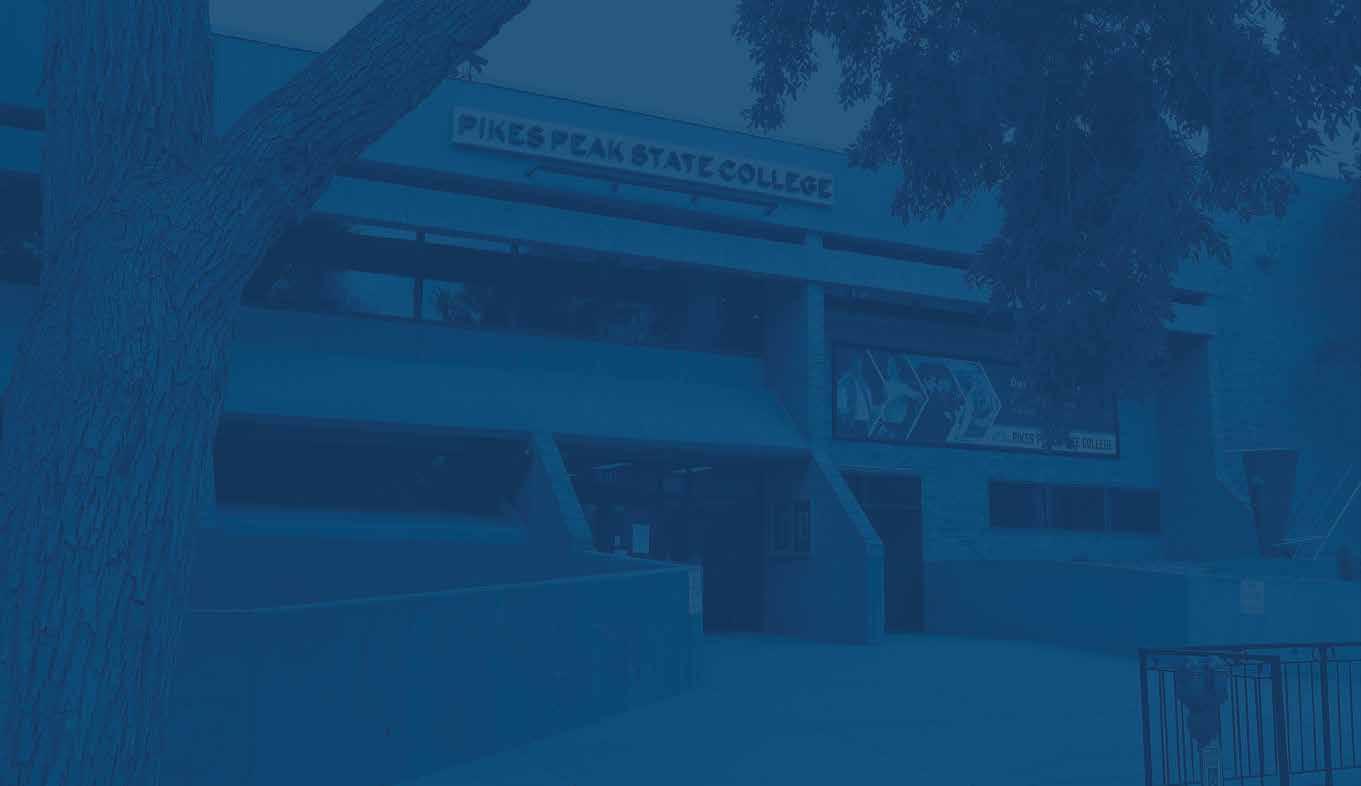

















By Eric Young eric.young@gazette.com
As the landscape of public education and career-readiness continues to evolve, many Pikes Peak region school districts are investing heavily in developing new programming and partnerships to meet the needs of both students and the workforce.
Heading into the 2025-26 school year, Lewis-Palmer District 38 is leading the charge with a new state-of-the-art facility for multiple new career pathways. Named the Career and Innovation Center, the standalone facility will be available to all district high schoolers and offer learning opportunities in fields

unique to the area.
The five pathways were determined by a combination of recent data on the region’s current and future economic landscape, along with D-38’s student interest and community advisory groups.
Starting with Phase 1, juniors and seniors will have access to new coursework in advanced manufacturing, engineering and skilled trades at the center located at 1200 Synthes Ave. Available classes will include welding, aerospace engineering and electronics engineering as well as the home build project that was previously at Lewis-Palmer High School. Transportation will be provided to all students and classes will span two

Quality Education. Real Results.
Fresh Start.
periods for more immersive experiences.
“Palmer Ridge High School has never had a home build and they’ve never had a welding class, just because of their facilities,” D-38’s Secondary Programs Coordinator Jessica McAllister said. “Now with this centralized facility, Palmer Ridge students are going to get to experience that.”
Phase 2 will eventually expand offerings to include computer science and health care pathways. While there isn’t a concrete date for these programs, McAllister said their entry-level courses will be offered at existing schools as both the facility and advanced coursework continue
to develop.
In addition to the school district’s own dollars invested in the program, a large part of rounding out the new center’s programming is through a growing number of industry partnerships. McAllister said this emphasis on partnerships was planned early in the center’s development, hoping to both educate current students and prepare the future workforce for local industries.
“We were having conversations with someone from Springs Fab [Fabrication], and he was saying that he cannot find welders,” she said. “And so, when we started telling him that we have 90 students that are interested in our welding program alone,
When traditional school settings haven’t worked, we provide a path forward. Our specialized Day Treatment Program serves students in grades 3-12 who have faced unique educational challenges.
We Understand Your Student’s Journey
• Lost credits from school changes
• Trauma-related learning challenges
• Need for individualized attention
• IEP and 504 plan accommodations
Our Commitment to Success
Personalized Learning
Plans tailored to each student’s needs
Flexible Structure that builds confidence and independence
Academic Testing & Assessment to identify the best path forward
Specialized Instruction from trauma-informed educators
Every student deserves an education that engages, inspires, and prepares them for success.
J. Wilkins Oppor tunity School
Accepting enrollments for grades 3-12
719-466-0102 | info@griffithcenters.org | griffithcenters.org



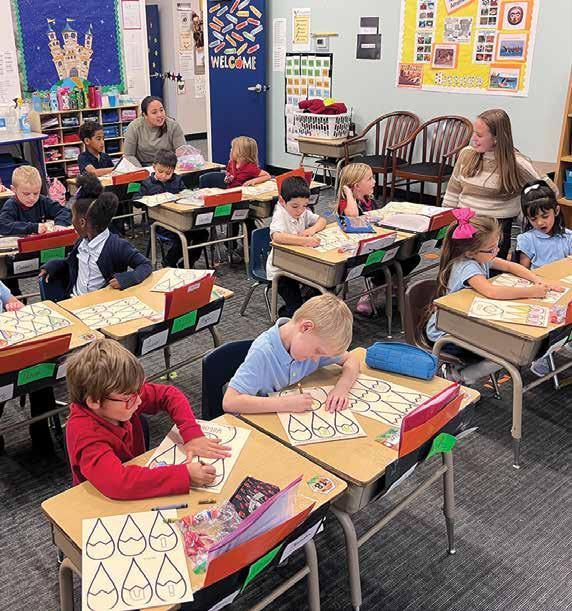

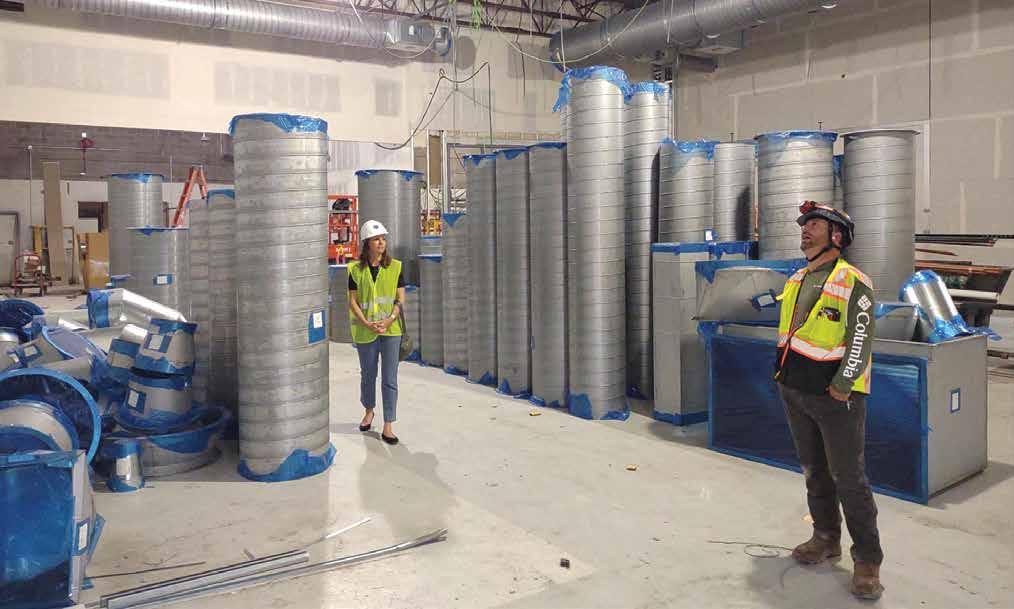





that became really exciting to him.”
To date, Nova Flex, Integris and IEEE are among the center’s nationwide partners, along with local employers like Jabil and education entities like the University of Colorado Colorado Springs and Westminster D-50.
D-38 has met with UCCS to discuss possible collaborations with the university’s electronic engineering course to ease matriculation, while D-50where? recently donated $188,000 worth of equipment from its sunsetting trades program.
McAllister said these partnerships, along with the various grants the district has applied for, have expanded their reach and planning for the incoming center.
In addition to providing workbased learning and internship opportunities, she said the partnerships will also provide students with what she referred to as “supervised entrepreneurial experiences” to give them the opportunity to solve real problems that local industries currently face.
“How can we create projects that will serve your industry? So, we’re also taking about different ways in bringing the relevance and intentionality that is happening in industry to our learning environment,” she said.
In applying for the U.S. Department of Education’s CTE CHIPS Challenge, D-38 will launch Colorado’s first high school course in electronics and semiconductor engineering and manufacturing in
partnership with local industry leaders at the center.
The nationwide competition, which was born out of the federal CHIPS Act signed into law in 2022 to grow domestic semiconductor production and manufacturing, would ultimately get terminated by the Department of Education July 17, but McAllister said experiences like this have offered them new opportunities to develop their offerings to students.
“We get to collaborate on a national level with these different competitors, but also bring in different voices from industry, the government about the importance of CHIPS-aligned occupations and training,” she said.
The nationwide competition was born out of the federal CHIPS Act signed into law in 2022, which seeks to grow domestic semiconductor production and manufacturing through funds and incentives.
Further increasing its use as an overall community resource, McAllister said the plan is for the center to be open to adult learners during the summer months, weekends and after-school hours to develop their respective skills.
Elsewhere in El Paso County, other districts are in the midst of their own respective CTE expansions.
This fall, Colorado Springs D-11 will be ready to open the Colorado Springs School of Technology. Much like D-38’s incoming cen -
ter, the innovation zone will offer students the opportunities to work alongside local businesses and business leaders and earn industry certifications through internships and mentorships.
Where it differs is that it will offer coursework focused on careers in aerospace, defense, cybersecurity, information technology and space technology. Students will also have opportunities for dual enrollment with the University of Colorado Colorado Springs and Pikes Peak State College.
While it’s not slated to open this fall, Academy D-20 is hard at work developing a new center for expanded career and technical education (CTE) programming as part of its rebuild of Air Academy High School.
To complement the existing Center of Excellence at Liberty High School, the center will offer career pathways in aviation, advanced manufacturing/mechatronics, hospitality management/culinary, and computer programming/AI technology for all D-20 high school students.
D-20 spokesperson Mark Belcher said talks to develop the new CTE offerings began several years ago as part of the district’s long-term strategic planning. Conversations gained momentum as leadership evaluated district-wide facility needs, student interest, and workforce demands when considering the Air Academy rebuild through a 2024 bond vote.
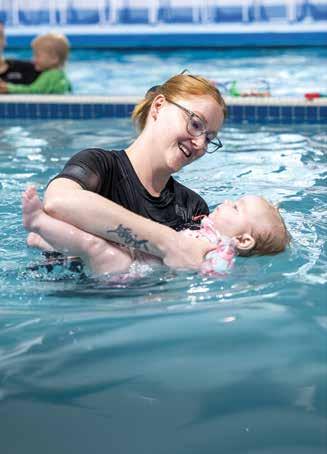



By Eric Young eric.young@gazette.com
How do you teach a student enamored with the performing arts fundamental science lessons like polarity and magnetism?
For Columbia Elementary School in Colorado Springs District 11, the answer is simple: put on a play.
“Watching kids run in attraction and bounce off each other for repulsion is a great way to demonstrate to everybody what magnetism is or isn’t, instead of ‘Did you get the question right or wrong on a worksheet?’” D-11 Superintendent Michael Gaal said.
In its ongoing effort to maximize success in all students, Colorado Springs D-11 is continuing the rollout of academic pathway schools to appeal to all types of learners.
Starting in the 2025-26 school year, Mann, West and Swigert middle schools will begin to plan out their incoming experiential learning; science, technology, engineering and math (STEM); and dual-language immersion pathways, respectively.
These middle schools will join Holmes, Jenkins, Sabin, Galileo and North, which are entering their second years with their pathways.
The different pathways determined by the district include STEM, visual and performing arts (VAPA), dual-language immersion, outdoor education, career and technical education, and the International Baccalaureate (IB) curriculum.
“Any time a child is active in their learning, they are more successful,” Gaal said. “Pathway schools give us an opportunity, in a controlled fashion, to find those passions and now we’re getting ready to morph them into middle schools.”
An expansion of the district’s academic master plan rolled out for the 2020-21 school year to meet the needs of a diverse array of district families, the new slate of middle schools represents the continuation of the district’s introduction of elementary pathways in recent years.
A pathway school refers to a school with specialized offerings and curriculum for all students in a school district to attend, if they’re interested. Unlike a magnet school, which can have stricter parameters for enrollment based on meritocracy or other factors, pathway schools are available to all students regardless of
their location . It also differs from a charter school because it is still held to the performance goals, policies and regulations enacted by the school district.
Starting with Steele Elementary receiving an IB designation in 2023, the district developed its first pathway of schools for the college prep curriculum through high school. Students interested in seeking an IB diploma can now start at Steele and feed into North Middle School and then Palmer High School, which are both IB-designated.
Following a process over the past three years that included community feedback and curriculum planning, D-11 implemented new pathways into six of its elementary schools: Columbia and Martinez are now visual and performing arts integrated schools, Bristol and McAuliffe now specialize in STEM, Howbert is now an outdoor learning school and Martinez a dual-language school for English and Spanish.
All areas and subjects of instruction are complemented with their particular pathway. While still meeting educational standards set by the Colorado Department of Education, the schools’ teachers are then allowed to specialize their lesson plans in all subjects with the common area of interest.
At Columbia, a lesson in English Language Arts includes a tableau of a Roman council acted out by students to learn about Julius Caesar. Columbia’s principal, Stephanie Atencio, observed that these types of lessons — or scenes, if you will — are often
continued by students in the cafeteria or on the playground during recess.
”And that’s what’s really exciting to me, as an educator: to see that the kids are still engaged with their learning outside of the classroom,” she said.
Conversely, Bristol Elementary is a school previously known for its arts focus with programs like its Suzuki violin classes, so teachers pushed to adopt a STEAM pathway. Now, with the greater focus on science and technology, teachers often pair a social studies lesson like famous explorers throughout history with supplemental information on their different ships, the engineering to build them and their utilization of compasses.
The specialized coursework also allows greater opportunities for experiential learning. Howbert often utilizes the abundance of opportunities for outdoor learning in the area while VAPA schools may take field trips to see the Colorado Springs Philharmonic or host professional musicians or artists to teach a lesson at the school.
“The standard doesn’t change. But how your child interacts with that standard to learn it, we’re finding that parents want a more niche experience that is complementary to either their student’s passion or their student’s known learning style,” Gaal said.
The goal of expanding the pathways into middle schools was to continue the academic instruction and
development of the specialized throughout their K-12 schools’ pathways were by what elementary school and the high school they
For example, in addition IB pathway, Coronado strong robotics program middle school West a on STEM education or pathway for McAullife
The two other middle a defined pathway, Jenkins have instead been designated the district is referring Neighborhood Schools.”
Nicole Ottmer, D-11’s and implementation, refers to “rich, broad” provided at the school experiences, despite not single area of focus.
Are the pathways making
The results inside and classrooms have been positive,
In the case of Columbia both schools landed on list for school performance improvement” schools then, the schools’ respective have been implemented off the state’s watch list, receiving the state’s highest “performance” school.

Other schools like Howbert Bristol have maintained “performance” ratings time, but the specialized now attracting new families have been interested
“I give weekly tours are interested in the we’re about 50-50. are interested in our program and half our STEM programs,”
Elementary Principal
“We’re about 60% of our families areas outside our Ottmer said in reading assignments textbook to a can make the some students developing foundational reading skills,
The new logos were designed to reflect the specialized outdoor education, dual-language immersion and arts now offered at each school. Illustration by The
specialized learners K-12 years. Middle were partly determined school feeds into them they feed into. addition to Palmer’s Coronado High School’s program made its feeder suitable fit to focus or Mitchell’s aviation McAullife and Sabin students. middle schools without Jenkins and Holmes, designated as what referring to as “Quality Schools.”
D-11’s chief of strategy said the designation broad” experiences school for deeper learning not being tied to a making a difference? and outside the positive, thus far.
Columbia and Martinez, on the state’s watch performance as “priority in 2022. Since respective pathways implemented and both are now list, with Martinez highest rating as a school.
Howbert and maintained their respective ratings over this span of specialized instruction is families who may not interested before.
tours to families who the school and I’d say Half of the parents our Suzuki violin half are interested in programs,” said Bristol Principal Gabe Hammel. 60% choice. So, a lot are coming in from our area.” that simple tweaks assignments from a script for a play difference for developing their skills, with one
specialized instruction like and visual and performing The Gazette

A map of Colorado Springs D-11’s network of schools. A legend is included indicating the different academic pathways students and families can take in the school district.
Columbia student showing two years of reading growth in six months.
Along with new training and lesson plans, the elementary schools have received greater investments in programming to support their respective pathways. Howbert Elementary now features a home garden and outdoor classroom while Martinez has a dance studio complete with mirrored walls. Each elementary pathway school now has a revamped logo to further showcase their unique offerings.
Another result has been a new culture and identity for students, staff and even the
neighborhood to embrace.
”We now have people walk up to our school who are excited and want to be a part of it by helping out teachers and participating in our art nights. They’ve really come out in droves,” Atencio said.
”I had one parent recently walk up to me and say the school has saved the neighborhood. He was very moved.”
Rather than continue implementing more pathways into existing schools, the plan for D-11 is to continue the development of the current pathway schools, but options remain for further
expansion like potentially adding languages to its dual-language schools.
Beyond the rollout of the middle schools, Gaal said the plan is to ultimately implement job-embedded internships and apprenticeships aligned with these pathways in D-11’s high schools with options to earn college credits.
“That, to me, is the fulfillment of the pathway: that a kid says, ‘I did these things in elementary and middle school and now here’s my hyper-specific thing that happens in high school that’s just for me,’” he said.
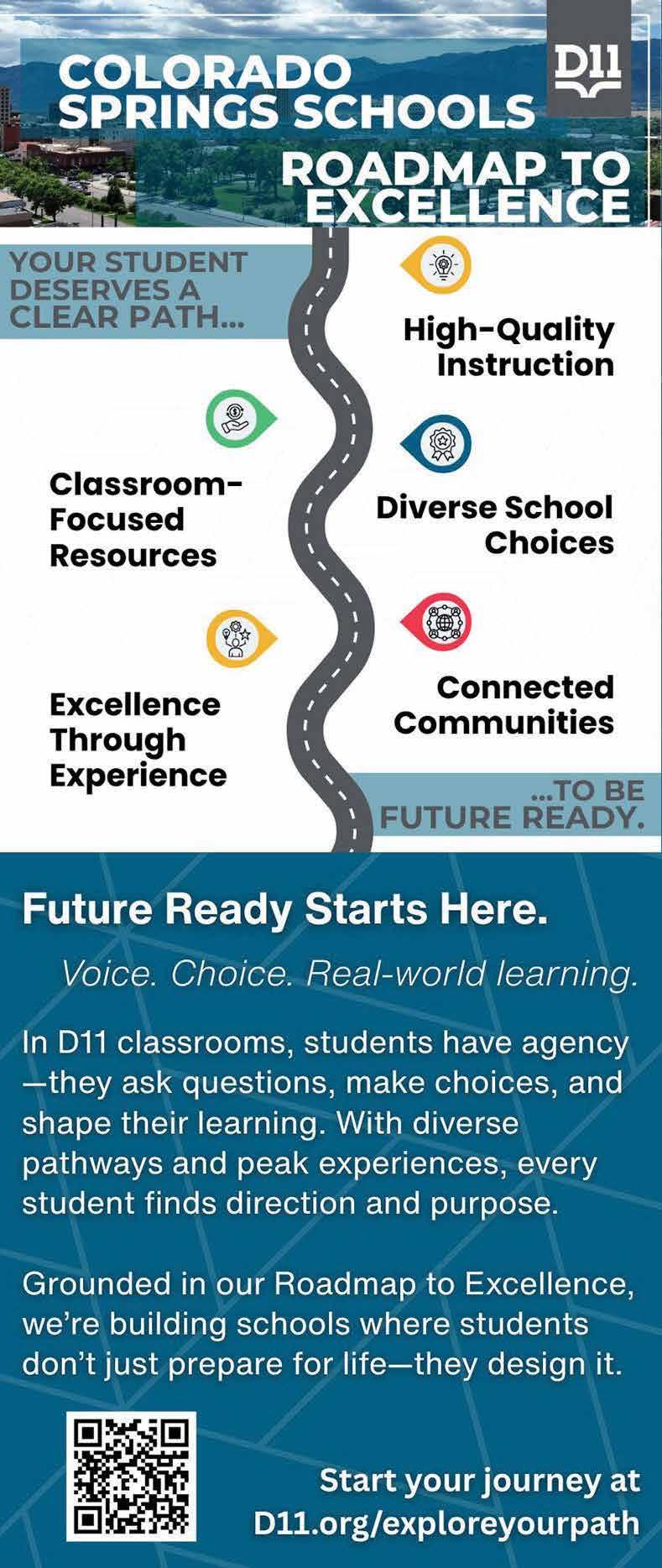
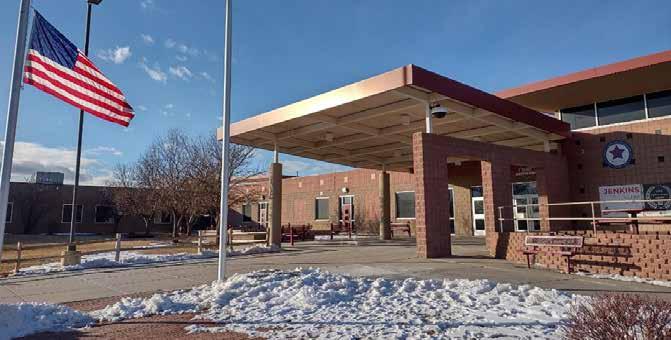
By Eric Young eric.young@gazette.com
Following a tumultuous year that saw its students and staff relocate to neighboring schools, Colorado Springs District 11 is making critical repairs to Jenkins Middle School, which was deemed structurally unsafe by the Colorado Springs Fire Department and forced to close last December.
Opting for a partial rebuild that will include new wings and features, the middle school is slated to welcome back sixth- and seventhgrade students by the start of the 2025-26 school year.
Like last semester, eighth-grade students will attend the nearby Doherty High School in a converted wing of the campus for Jenkins.
Transportation routes are still being confirmed and will be communicated to families as soon as they are finalized.
Jenkins opened in 1999, southwest of Austin Bluffs Parkway and Dublin Boulevard, and has been subject to freezing, thawing and runoff impacts because of its close proximity to Cottonwood Creek north of the school.
D-11 had previously earmarked $10 million in renovations for Jenkins planned to take place during the 2026-27 school year as part of its facilities master plan, but a recent fire inspection found the school had reached a “critical point” and was in need of fire safety repairs.
The final report on the building’s structure found that soil settlement and increased moisture content and density caused its foundation to shift and fire barriers to go out of
flush with their frames.
The board would go on approve the allocation of $5 million to repair Jenkins’ gym and media center and later $26 million to demolish and rebuild its seventhand eighth-grade wings last April.
Among the construction remedies include a structural slab to be put beneath Jenkins’ media center, which was found to be among the areas in most need of remediation. The new slab will ensure there is no foundational movement like what compromised it before.
The new Jenkins will also feature fire suppression systems that are up to today’s fire codes. Because of its construction in the ‘90s, much of the original building didn’t have modern-day requirements like sprinkler systems.
The construction will also introduce new features to the school that include an amphitheater, outdoor learning spaces and an academic wing with modernized learning spaces constructed south of the existing structure.
“It’s not a building slipping into the creek anymore, it’s a building rising on the other side that will have new instructional space and a 21st century media center that will open up to Pikes Peak, that will make it the destination middle school for our northeastern part of town,” D-11 Superintendent Michael Gaal said during a June 4 board meeting.
Starting in late July, Jenkins staff will begin moving back into the building in phases ahead of the school year.
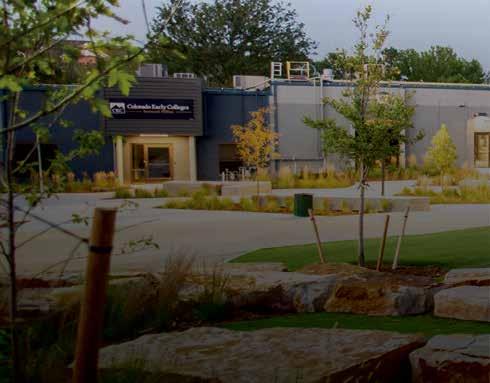







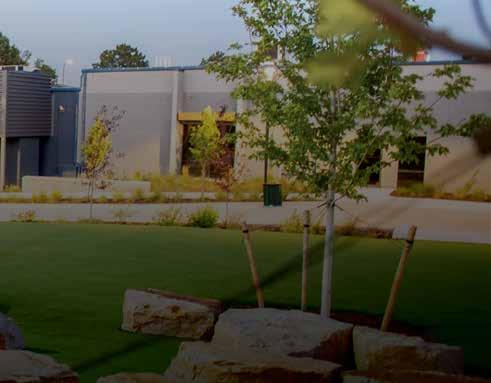
PUBLIC CHARTER MIDDLE & HIGH SCHOOL WELCOMING ALL STUDENTS IN THE COLORADO SPRINGS AREA!

Why enroll at CEC Colorado Springs?

Join Colorado Early Colleges during the middle school years to accelerate your child’s learning and preparation. CEC middle grades provides your child with solid foundational learning skills. We assess every student who enrolls to meet them where they are academically, regardless of their level, and provide them with the opportunity to begin working on college-level courses as soon as they are ready!

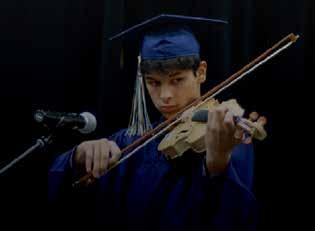




Scan to learn more and find our upcoming informational meetings.



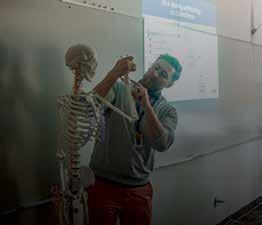
Colorado Springs
Homeschool Academy also offers one day a week homeschool enrichment.
coloradoearlycolleges.org/coloradosprings


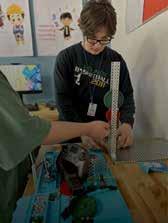


By Eric Young eric.young@gazette.com
November will see a number of local board of education seats up for this year’s coordinated election in the Pikes Peak region.
School board elections in Colorado are held on the first Tuesday after the first Monday in November on odd-numbered years. Board members are limited to serving two consecutive elected four-year terms unless their board has extended or removed term limits.
As locally elected officials, school boards manage the district and their schools through approving policies, curricula, budgets and other administrative procedures.
The work is predominantly done in cooperation with the district’s superintendent, who is selected by the board and oversees the academic performance, financial management and personnel decisions of all schools. The board also sets its own educational goals for its students that align with state law and reflect local values.
For nonpartisan races, all board candidates must reside in the school district they are running for, be registered voters for at least 12 consecutive months prior to the election and not be convicted of a sexual offense against a child.
According to the Colorado Association of School Boards, state election law requires all candidates to file a nomination petition with

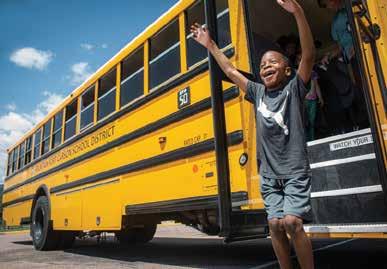

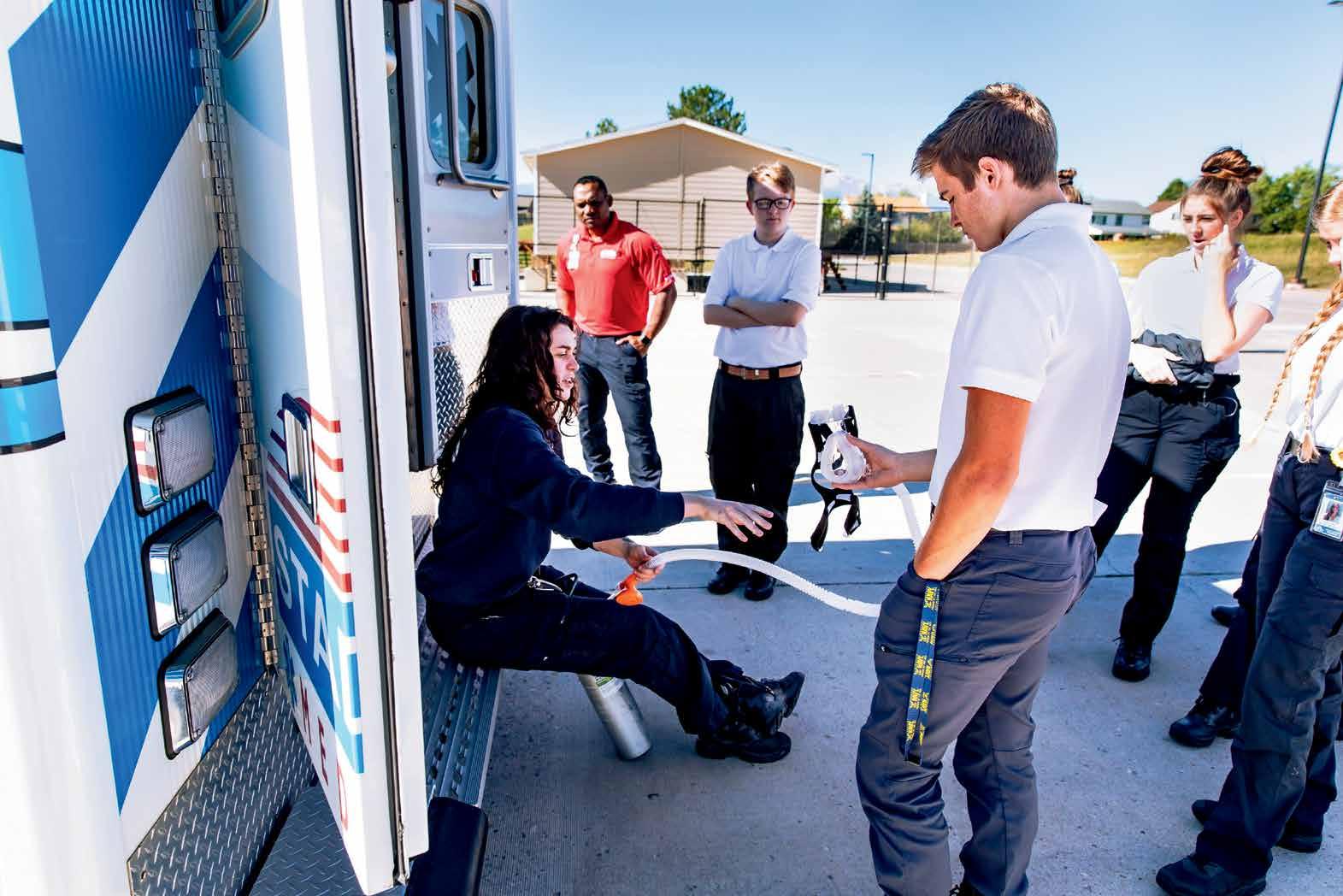
Robotics
Robotics
Biomedical Sciences
Business
Biomedical Sciences
Business & Entrepreneurship
Comprehensive
Individual
Concurrent
Comprehensive
Individual
Concurrent
the school district’s designated election official. In districts with less than 1,000 students, the petition must be signed by at least 25 registered voters who live in the school district. If the district has at least 1,000 students, petitions must be signed by at least 50 registered voters who live in the district.
Nomination petitions can be found at the school district’s office starting Aug. 6 and are due Aug. 29.
All candidates must also file a candidate affidavit with the Colorado Secretary of State’s office within 10 days of becoming a candidate. They also must report contributions and expenditures through the Secretary of State’s online TRACER program.
Here’s a look at some of the school districts with expiring board terms this year:
• Colorado Springs D-11
Director Julie Ott
Secretary Dr. Sandra Bankes
Treasurer Lauren Nelson
• Academy D-20
Vice President Nicole Konz
Director Susan Payne
Director Lauren Yanez
• D-49
Vice President Jamilynn D’Avola
President Lori Thompson
• Lewis-Palmer D-38
Vice President Kris Norris
President Tiffiney Upchurch
• Harrison D-2
Vice President Janice Frazier
Treasurer Joyce Salazar
President Michelle Wills-Hill
• Widefield D-3
Member David Dock
President Gregory Fisher
Treasurer Donna Walsh
• Manitou Springs D-14
Vice President Natalie Johnson
President Christina Vidovich
• Cheyenne Mountain D-12
Treasurer Randy Case
Vice President Nissa Steinhour
• Fountain-Fort Carson D-8
Treasurer Kenneth Coffee, Jr.
President Shirley Martinez
• Woodland Park RE-2
Vice President Cassie Kimbrell
Director Suzanne Patterson
Secretary David Rusterholtz
• Cripple Creek-Victor RE-1
President Mary Bielz
Vice President Donna Brazill
Treasurer Stanley Conley

August 6
First day that nomination petitions may be circulated
August 29
• Nomination petitions and accompanying forms must be filed
• Deadline to file as a write-in candidate
September 2
First day on which a school district may cancel an election if there is no contest
November 4
Election Day
Source: Colorado Association of School Boards, www.casb.org
At Thrive Home School Academy, we believe education is more than academics. Here, your student can attend once-a-week classes alongside other homeschooled students and participate in after-school and extracurricular activities like Band, Yearbook, Fencing, Drama and Sport Clinics!
At Thrive Homeschool Academy, we believe education is more than academics. Here, your student can attend once-a-week classes alongside other home-schooled students and participate in after-school and extracurricular activities like Art, Technology, Yearbook and String Orchestra. Elevate their learning beyond the books.

By Nick Smith nick.smith@gazette.com
As students prepare to head back to school, several Pikes Peak region districts are introducing new programs, faces and facilities in their schools. Some are also asking voters to help improve their schools.
New Assistant Superintendent Steffanie Howell will be helping Superintendent Aaron Hoffman in his second year. While new to the role, Howell has been in District 3 for around 30 years, working her way up from a teacher’s assistant.
On July 26, the district was scheduled to host its Back To School Bash at Grand Mountain School. The five-year-old event gives school supplies, backpacks and information on community resources for students and families.
District spokesperson Sam Briggs said around $11,000 was raised and the district expected to have around 900 backpacks filled. Any leftover backpacks will be given to new students during the school year.
The district is also working on proposing an initiative to put on the ballot in November. The district is asking residents to pay $5.50 per $100,000 home value a month to provide funds for updating school building infrastructure, such as rooftop repairs, replacing boiler units and removing asbestos to provide for a more comfortable learning environment, Briggs said.
The initiative also asks for a mill levy override to go toward replenishing funds used for attracting and maintaining staff and paying for security measures. The total ask is $88 million and $5 million, respectively.
The Portrait of a Graduate is now in full implementation across the district. The program defines essential skills and competencies to prepare students for their life after graduation, according to district spokesperson Mark Belcher.
“It aims to connect classroom learning to real-world expectations, helping students grow not only in academic knowledge but also in their character, confidence and ability to make thoughtful decisions,” Belcher said in an email.
The program will be built into every facet of teaching and learning across the district, Belcher said. Each school will implement a plan that includes “standardsbased strategies” for reinforcing and measuring growth in the six competencies created by the district. A modern $6.5 million Fleet Maintenance Facility designed to support the district’s growing transportation needs also opened over the summer. The facility includes eight maintenance bays, improved lighting and expanded room for safely servicing the district’s more than 160 yellow buses, 13 activity buses and other vehicles.
Stepping out of her role as interim, the district is welcoming Amber Whetstine as the district’s new superintendent. Whetstine, who has been the district’s assistant superintendent since 2021, began her education career in Minnesota before relocating to the Pikes Peak region. She first served in District 49 in a variety of roles such as instructional coach, school administrator and executive director of learning services.
The district is rolling out a “onestop shop” called MyPowerHub, a platform that brings grades, attendance, schedules, assignments and communication tools together, starting Aug. 1.
A bond proposal will be on the ballot in November. The bond will provide “essential upgrades” to schools in Manitou, including replacing outdated systems, updating learning spaces and ensuring ADA compliance. The bond will also enhance security measures, if approved.
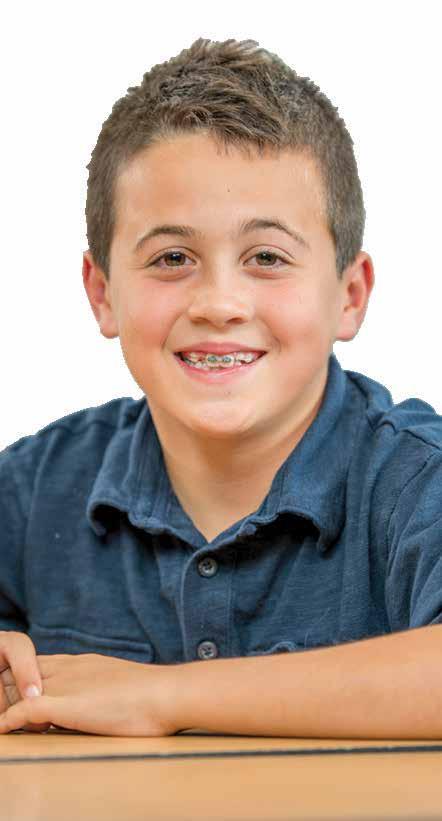

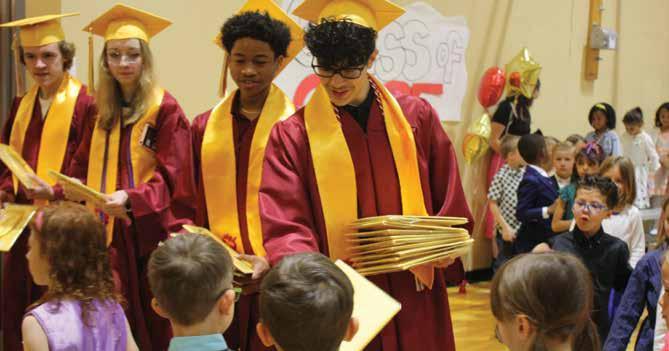





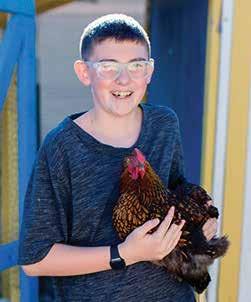


By Nick Smith nick.smith@gazette.com
Class is almost back in session. But some students will be waking up to get ready for school at home.
As homeschooling across the United States becomes more popular, many districts are starting to implement programs to assist parents in providing quality education to their children while giving them the opportunity to connect with other kids.
“Most of the families ask for the socialization piece. They just want their kids to be able to interact with other kids and also be able to participate in some school-type activities like field trips and things without being in a traditional school setting,” said Emily Ray, the principal of Base Camp.
Base Camp, District 11’s homeschooling program, runs Tuesdays, Wednesdays and Fridays for K-8 at Trailblazer Elementary School. The kids are grouped together within four grades of
each other, but sometimes they intermix, which Ray said can be beneficial for learning.
Established two years ago, the program is split up into three Enrichment Pathways, which are divided into categories such as visual and performing arts. There are four teachers who teach the various subjects, including technology, gardening and theater.
Students can start their day learning about robotics and coding, but then switch to the outdoors and learn about how to survive in the woods or how to identify poisonous plants.
“It’s organized chaos is the best way to put it. You have your plan, but the kids are all in different spots doing different things ... there’s just lots of different things going on at one time,” Ray said.
For robotics, the program has Dash Robots, which are used to introduce children to coding. Ray said the children have iPads they use to control the robots, which can talk, take pictures and move around.

The children often create obstacle courses and host competitions, and teach the robots how to navigate through them.
The program goes on field trips to various locations such as Cave of the Winds and also provides disc golf, rock walls, playgrounds and a gym for kids.
“Most of the families wanted their kids to be critical thinkers and problem solvers, and that’s what we try to offer, giving them the ability to think and ask questions in a safe space,” Ray said.

Further north in Monument, Lewis-Palmer School District 38 offers a Home School Enrichment Academy for elementary, middle school and high school students.
The one-day academy is hosted at the Grace Best Education Center on Wednesdays for grades 6-12 and Thursdays for K-5. With 19 staff members, the academy offers a variety of “hands-on” programs, said Principal Julie Jadomski.
Some of these programs include



www.springsco.church/ about-preschool
creating escape rooms, learning how to create nutritional meals and exploring their creative side through art and writing.
The academy is set to get bigger, with a new 14,000-square-foot building set to open right next to their current school, which will be demolished, Jadomski said.
Base Camp will open on Aug. 25, with Homeschool Enrichment Academy opening on Sept. 4.

By Odell Isacc The Gazette
As schools in Colorado and across the U.S. worked to navigate the COVID-19 pandemic, many school districts were forced to adopt online learning options to deal with erratic school closings, student and staff quarantines, and a host of other unforeseen problems.
The Pikes Peak region’s largest districts had offered limited access to virtual learning for years, but they expanded their platforms in response to the pandemic, and some smaller districts have established their own online schools.
As the U.S. emerged from the pandemic, many families discovered a preference for the online model, and enrollment in online schools began to increase.
According to data from the Colorado Department of Education, student enrollment in online schools and programs increased to 31,389 students in the 2023-2024 academic year. That
represents less than 4% of total student enrollment but online school has become an integral offering in many Colorado districts.
Several districts in the Colorado Springs area, including Harrison District 2, Widefield District 3, Districts 11 and 20, and Peyton District 23-JT have developed online learning academies.
Emily Ray, principal of Spark Online Academy in District 11, said virtual instruction can be an attractive option for a number of reasons.

“They could be academically ahead, or behind, or they have social anxiety and aren’t comfortable around other students,” Ray said. “Some of them play sports where it’s not feasible to be in class for seven hours a day. Some of their families travel, and their schedules don’t work well within a traditional learning environment.”
“A lot of our families enjoy the flexibility of online learning,” Ray said. “We’ve had students attend from Hawaii. We had a student attend from Iraq. As long as they have Colorado residency, they can attend from just about anywhere.”
While in-person learning helps develop social skills in ways that online instruction cannot, there are several advantages to virtual schooling, experts say. It teaches time management, develops technical skills, offers an independent learning
comfortable learning environment.
“Students who prefer self-paced learning have a tendency to thrive in online schools,” Ray said.
“Kids are capable of more than we sometimes give them credit for. I feel like many kids are told what to think and what to do, without being given more opportunities to think and learn for themselves. Online schooling gives them the chance to try things out, to sometimes fail, and learn from that failure to move forward with confidence.”



Kids who learn to love math gain confidence for a successful year. Mathnasium students learn from highly trained, caring instructors in a fun and engaging environment. As their ability to think critically and solve problems increases, they grow in confidence as well. They’ll receive:
• A customized learning plan based on their individual needs and goals
• A variety of teaching techniques to accommodate how they learn best
• Games, activities, and rewards that inspire learning by raising the fun factor

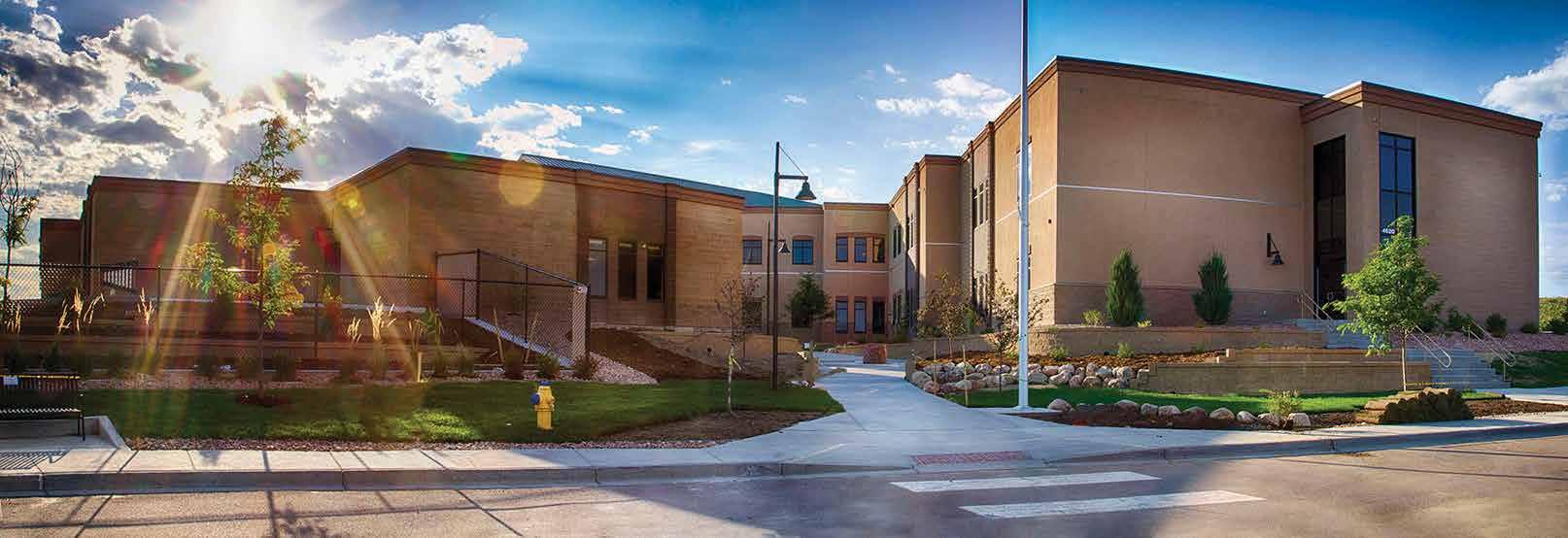
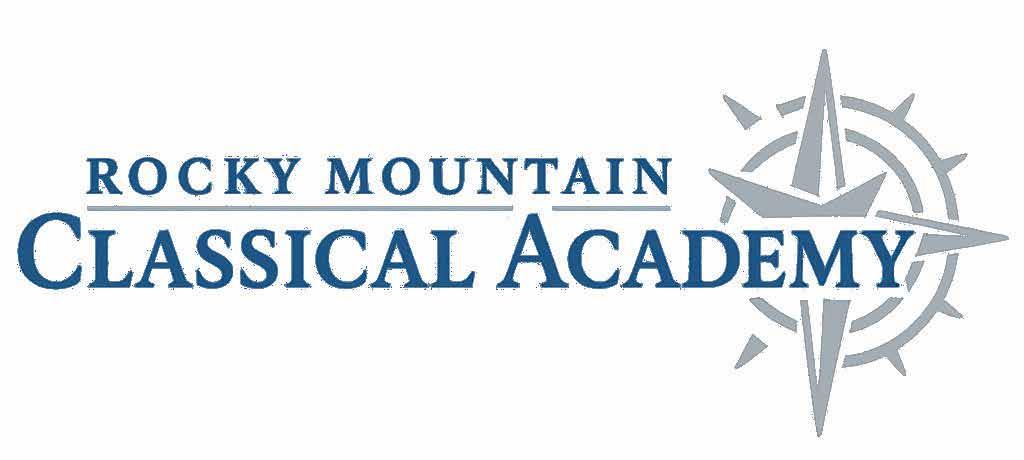
Rocky Mountain Classical Academy exists to support parents in developing citizens of integrity and character who are equipped with a strong knowledge base and academic skills. The basis of this development is rooted in an academically rigorous, content-rich, classical educational program with Core Knowledge emphasis.
Explore strong extra-curricular opportunities such as Athletics, Art, Robotics, Honor Society & so much more!
Offering tuition-free k-8 education & tuition based preschool & homeschool options!

